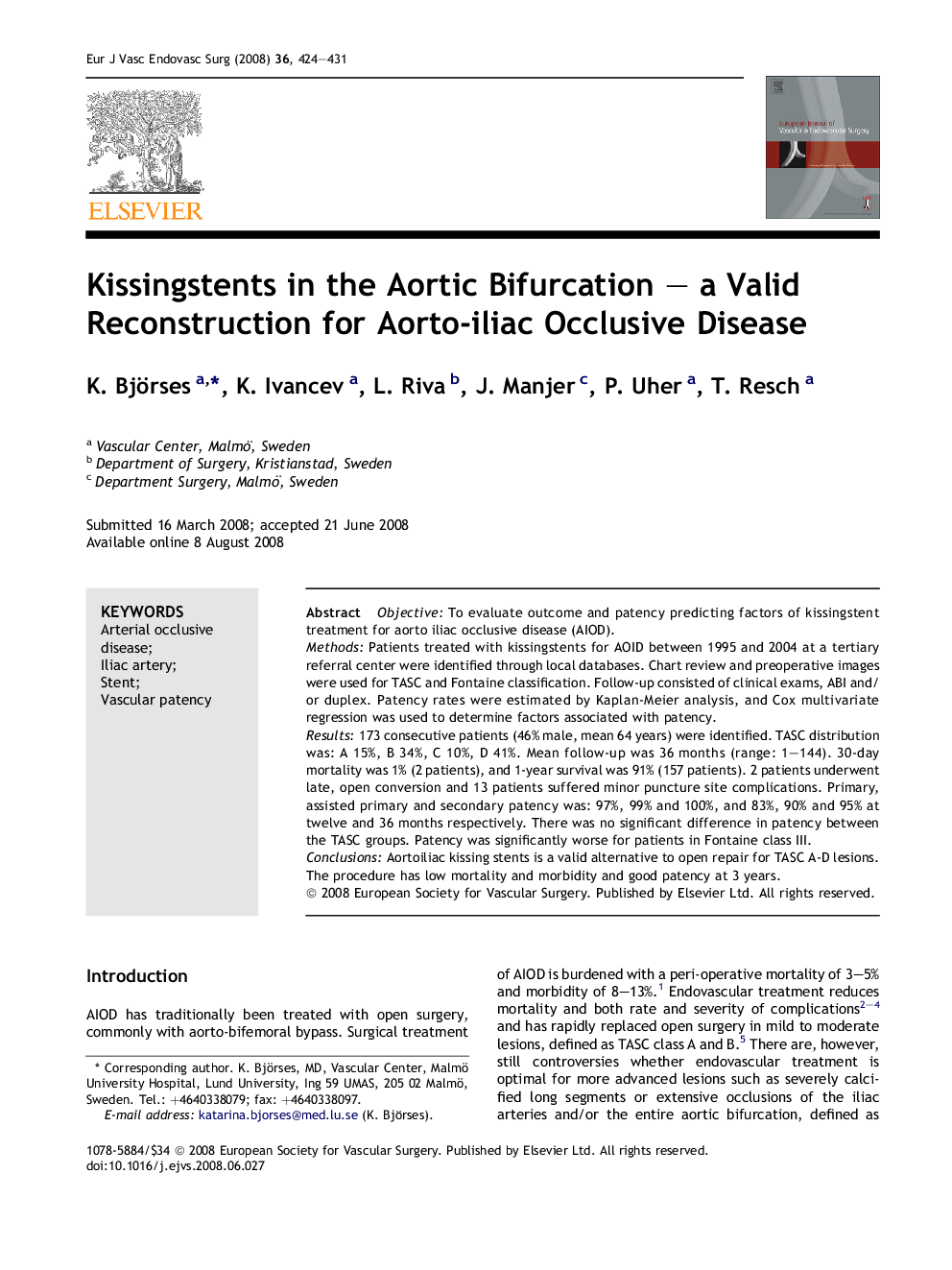| Article ID | Journal | Published Year | Pages | File Type |
|---|---|---|---|---|
| 5958558 | European Journal of Vascular and Endovascular Surgery | 2008 | 8 Pages |
ObjectiveTo evaluate outcome and patency predicting factors of kissingstent treatment for aorto iliac occlusive disease (AIOD).MethodsPatients treated with kissingstents for AOID between 1995 and 2004 at a tertiary referral center were identified through local databases. Chart review and preoperative images were used for TASC and Fontaine classification. Follow-up consisted of clinical exams, ABI and/or duplex. Patency rates were estimated by Kaplan-Meier analysis, and Cox multivariate regression was used to determine factors associated with patency.Results173 consecutive patients (46% male, mean 64 years) were identified. TASC distribution was: A 15%, B 34%, C 10%, D 41%. Mean follow-up was 36 months (range: 1-144). 30-day mortality was 1% (2 patients), and 1-year survival was 91% (157 patients). 2 patients underwent late, open conversion and 13 patients suffered minor puncture site complications. Primary, assisted primary and secondary patency was: 97%, 99% and 100%, and 83%, 90% and 95% at twelve and 36 months respectively. There was no significant difference in patency between the TASC groups. Patency was significantly worse for patients in Fontaine class III.ConclusionsAortoiliac kissing stents is a valid alternative to open repair for TASC A-D lesions. The procedure has low mortality and morbidity and good patency at 3 years.
